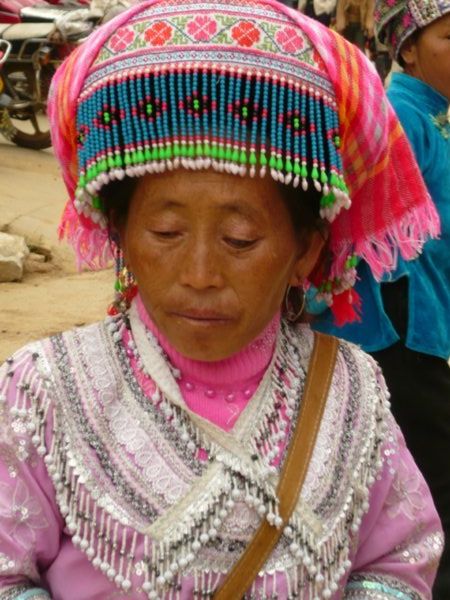Yunnan Province
Bordering Tibet, Vietnam, Laos and Burma, Yunnan province’s ethnic makeup is predictably diverse, with minorities such as the Miao, Yi, Dai and Zhuang constituting a third of the population. Each group, and in deed each village within each group, has its own spectacularly exotic traditional dress which is often worn during everyday life even to this day. On top of this Yunnan has hundreds of rivers and lakes, stunning mountain scenery, jungles and ethnic minority festivals in many of its towns.
Yunnan’s capital, Kunming, is 48 hours by train from Shanghai or 36 from Beijing. There are also fairly cheap flights. There are a couple of backpacker hostels in the city that can organise tours. They, however, like the Lonely Planet, for some reason do not know about the best places in Yunnan to see the psychedelically-dressed ethnic minorities. They do write up a couple of tribal markets such as those in Xishuangbanna but they are by far the least impressive ones strangely. The good thing is that this leaves a lot of real hidden gems for the more adventurous traveler to discover!
The absolute best area of Yunnan to visit ethnic minorities is the South East, using the towns of Mengzi and Yuanyang as bases. However, not one tribal market in this area is mentioned in the Lonely Planet or in backpacker hostels! My theory is that this is because the rice terraces at Yuangyang, which are absolutely spectacular and have been turned into a major paid tourist attraction, overshadow all else in the area. Villages and towns such as Lao Zhai, Huang Cao Ba, Laomeng and Mengzi have the most stunning, near extraterrestrially-dressed tribespeople I saw anywhere in South West China.
Ruili, on the border with Burma, is also an interesting place to visit, with two thirds of the population ethnic minorities. People can be seen everywhere wearing traditional Burmese dress and outside town are some temples whose monks wear orange robes and tattoo their arms.
Almost any village market in Yunnan will have local tribespeople at it as do even some larger towns like Menzi whose streets overflow with the psychedelically dressed, enormous headdress-wearing Yi people on market day. Often markets also have an assortment of shamans, monks, fortune tellers, street hairdressers, street dentists pulling out people’s teeth and lines of ox carts bringing people to market on the road approaching town.
To find out which day the markets in each town or village will be you could either ask locals or, if basing yourself in Yuangyang, go to the shop “Window of Yuangyang”. It sells souvenirs hand made by the region’s tribal minorities to help them benefit from tourism. The owner, who speaks good English, knows the locations and dates of all the most spectacular tribal markets. If basing yourself in Jinghong, Xishuangbanna (South West Yunnan) then the backpacker hostels will know what days a few of the area’s ethnic markets are held.
Very few people speak English other than in backpacker hostels, so come prepared with some Chinese or plenty of persistence!
Click here for my blog about the train ride from Shanghai to Kunming, Yunnan’s capital city, and my time spent in Kunming. It’s 1681 words and 24 photos. Links to blogs about individual villages, towns and markets can be found on the corresponding pages on this site.

Leave a Reply